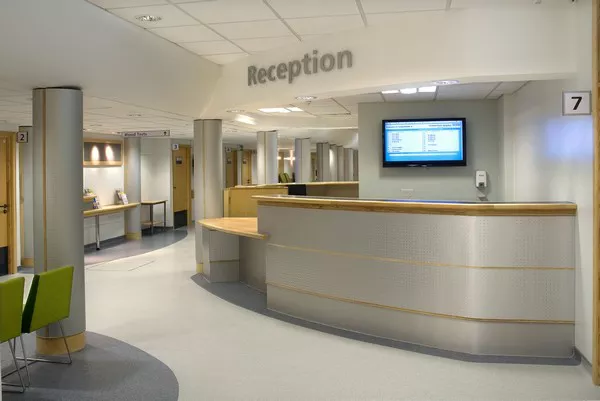Stroke, a leading cause of disability and death worldwide, occurs when there is a disruption of blood flow to the brain. Recognizing the symptoms of a stroke and understanding its impact on the brain’s hemispheres are crucial for timely intervention and effective rehabilitation. This article aims to provide insights into stroke recognition, the role of brain hemispheres, and strategies for treatment and recovery.
1. Stroke Recognition and Symptoms
F.A.S.T. Acronym:
Recognizing stroke symptoms promptly can save lives and prevent long-term disability. The F.A.S.T. acronym serves as a simple yet effective tool for identifying stroke symptoms:
Face drooping: One side of the face may droop or feel numb.
Arm weakness: Weakness or numbness may occur in one arm, making it difficult to raise.
Speech difficulty: Speech may be slurred or difficult to understand.
Time to call emergency services: If any of these symptoms are observed, it’s crucial to seek immediate medical attention.
One-sided Impact:
Stroke symptoms typically manifest on the opposite side of the body from the affected brain hemisphere. For example, a stroke in the left hemisphere of the brain will often result in symptoms affecting the right side of the body, and vice versa.
Detailed Symptom List:
In addition to the F.A.S.T. symptoms, stroke may also present with:
Numbness or weakness in the face, arm, or leg, especially on one side of the body.
Sudden confusion or trouble understanding speech.
Vision problems in one or both eyes, such as blurred or blackened vision.
Dizziness, loss of balance, or coordination.
Sudden severe headache with no known cause.
Recognizing these symptoms and seeking prompt medical attention is essential for minimizing brain damage and improving outcomes.
2. Brain Hemispheres and Function
Left vs. Right Brain:
The brain is divided into two hemispheres, each responsible for different functions. The left hemisphere primarily controls language, logic, and analytical thinking, while the right hemisphere is involved in spatial awareness, creativity, and intuition.
Impact of Stroke Location:
The specific symptoms experienced during a stroke depend on the location of the affected hemisphere. A stroke in the left hemisphere may result in:
Aphasia: Difficulty speaking, understanding language, or reading and writing.
Right-sided weakness or paralysis.
Impaired logical reasoning and problem-solving skills.
In contrast, a stroke in the right hemisphere may lead to:
Left-sided weakness or paralysis.
Spatial neglect: Difficulty recognizing objects or people on the affected side.
Impaired spatial awareness and visual processing.
Understanding these distinctions can guide healthcare professionals in tailoring treatment and rehabilitation plans to address specific deficits.
Visual Aids:
To enhance understanding, visual aids such as diagrams or images illustrating the brain hemispheres and their functions can be beneficial. These visuals can clarify the relationship between stroke location and resulting symptoms, aiding both patients and caregivers in comprehension and decision-making.
3. Treatment and Recovery
Treatment Options: Early intervention is crucial for minimizing brain damage and improving outcomes following a stroke. Treatment options may include:
Thrombolytic therapy: Administration of medication to dissolve blood clots and restore blood flow to the brain.
Mechanical thrombectomy: Surgical removal of blood clots using a catheter-based procedure.
Rehabilitation: Physical, occupational, and speech therapy to regain lost functions and promote independence.
Rehabilitation:
Rehabilitation plays a vital role in the recovery process by helping individuals regain lost functions and adapt to any permanent disabilities. Rehabilitation programs are tailored to the individual’s needs and may include:
Physical therapy: Exercises to improve strength, balance, and mobility.
Occupational therapy: Techniques to enhance independence in daily activities such as dressing, grooming, and cooking.
Speech therapy: Strategies to improve communication and swallowing abilities.
Consistent participation in rehabilitation programs can significantly improve quality of life and facilitate recovery.
Recovery Factors:
The extent of recovery following a stroke depends on various factors, including the severity of the stroke and the specific areas of the brain affected. Individuals with milder strokes and those who receive prompt medical treatment often experience better outcomes. Additionally, factors such as age, overall health, and access to rehabilitation services can influence the recovery process.
Conclusion
In conclusion, understanding stroke recognition, the role of brain hemispheres, and strategies for treatment and recovery is essential for improving outcomes and quality of life for individuals affected by stroke. By recognizing the signs of stroke, seeking prompt medical attention, and engaging in comprehensive rehabilitation programs, individuals can maximize their chances of recovery and regain independence.
FAQs
What sides do strokes happen on?
Strokes can occur on either side of the brain, leading to different symptoms depending on the affected hemisphere. A stroke on the left side of the brain may cause weakness or paralysis on the right side of the body, while a stroke on the right side of the brain may affect the left side of the body.
Does stroke affect right or left arm?
The arm affected by a stroke depends on which side of the brain is affected. If the stroke occurs on the left side of the brain, it may result in weakness or paralysis on the right side of the body, including the right arm. Conversely, if the stroke affects the right side of the brain, the left arm may be affected.
Where does a stroke usually start?
Strokes can originate in various regions of the brain, but they often begin in areas where blood flow is compromised due to blockages or ruptures in blood vessels. Common sites include the cerebral arteries, which supply blood to the brain. Strokes can affect different areas depending on the location of the blockage or bleeding.
Related topics:
- Understanding Heat Exhaustion & Diarrhea
- Heat Stroke: Recognizing Symptoms & Providing First Aid
- ESRD: Understanding Life Expectancy and Quality of Life


